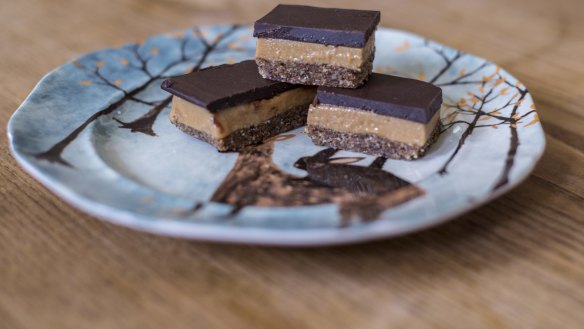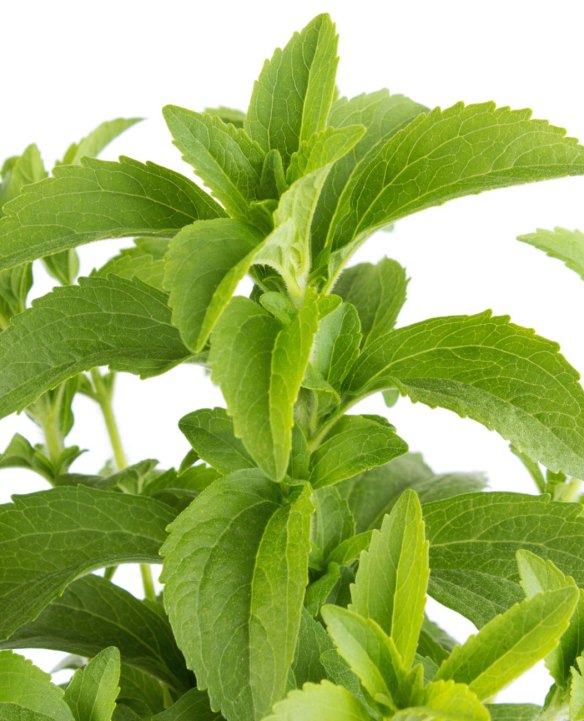A guide to sugar alternatives and recipes for sugar-free sweets
Concerns about health problems created by sugar have many people searching for alternative sweeteners.

The market for natural and low-sugar sweeteners is rapidly expanding. There are many reasons people are choosing to reduce their sugar intake; excess sugar consumption is linked to a myriad of health problems, including obesity, metabolic syndrome and tooth decay. In its most refined form, white sugar contains no nutrients and works purely as a source of empty calories.
Yet, seeking a healthy alternative to sugar is challenging. The term, "sugar-free" is largely a misnomer, as sugar or sucrose, a simple carbohydrate made from two molecules - glucose and fructose - is found in most plant-based foods, including fruits, vegetables, grains and dairy foods.
Only a handful of sweeteners are actually considered to be "sugar-free" (stevia is one). Choosing alternatives can depend on:

The amount of sugar contained in a product (relative to other nutritional factors, such as vitamins, minerals and fibre). Conventional sugar contains 100 per cent sucrose with no other nutrients, whereas fruit can contain anywhere between 50 and 70 per cent sugar, with an assortment of vitamins, minerals and fibre.
The type of sugar. Sugar, or sucrose, contains two molecules: glucose and fructose. Most sweeteners contain different amounts of sucrose, fructose and glucose and these various components can be problematic for different people.
The glycaemic index. This is a measure of how carbohydrates affect blood sugar levels. Carbohydrates are classified as low (<55), medium (55-70) or high (>70) depending on the rate at which they are digested and released into the bloodstream. Carbohydrates with a high GI break down quickly during digestion and release glucose into the bloodstream rapidly. Carbohydrates with a low GI break down slowly during digestion, and glucose is released into the bloodstream more slowly. Wherever possible, it is best to choose low GI carbohydrates.
Sugar alternatives
Dried plums (prunes): Prunes have a low GI of 29 (which is relatively lower than most fruits; dates are between 40 and 50). They are an excellent source of soluble fibre (100g serve contains 28 per cent of daily fibre requirements) and also contain good amounts of vitamin K, potassium and antioxidants.
Honey has an intensely sweet flavour. It contains 75 per cent sugars, of which 40 per cent are fructose, and 31 per cent are glucose. This means it is rapidly absorbed within the body and can quickly increase blood sugar levels. It has a medium GI of 55 (however, there is some variability, depending on the source) and also contains trace amounts of minerals and antioxidants (in its raw form).
Maple syrup contains 67 per cent sugar, predominantly in the form of sucrose, with some single fructose and glucose molecules. It has a medium GI of 54 and also contains small amounts of vitamins, minerals and antioxidants.
Whole food powders: Lucuma, mesquite and maca powders are made from freeze-dried whole fruits and ground root vegetables and are favoured for their sweet taste and distinctive earthy flavour. They are relatively low in sugar - maca (31 per cent), mesquite (44 per cent) and lucuma (15 per cent). They are also a good source of minerals and have a low GI.
Coconut sugar has a sugar profile similar to conventional sugar (conventional sugar is 100 per cent sucrose, whereas coconut palm sugar is 95 per cent sucrose, plus fructose and glucose). It is less refined compared with conventional sugar and contains some minerals (potassium, magnesium, zinc and iron), as well as a smattering of B vitamins. Its standout feature is the low GI of 35.
Brown rice syrup: A good choice for people who want a low-fructose sweetener. It is made by adding enzymes to cooked rice, which breaks down into sugar molecules. The sugars in the final product are 52 per cent maltotriose (a triple sugar of glucose molecules), 45 per cent maltose (a double sugar of glucose molecules), and 3 per cent single glucose molecules. The final product is predominantly made from glucose, which has a high GI of 98.
Stevia is a herbal sweetener native to South America. It tastes 300 times sweeter than sugar and has zero kilojoules with nil effect on blood sugar levels. The catch with stevia is its slightly bitter aftertaste. In food manufacturing, products using stevia often compensate for the flavour by adding sugar alcohols to dampen the taste (a popular formula is 12 parts xylitol to one part stevia). In home cooking, you can mix it with another sweetener (such as a whole food powder, or maple syrup) to mask the aftertaste. Stevia can be bought as liquid drops or a refined white powder. There is also a greenish brown-coloured extract of the dried leaf available at some health food stores, considered the least-processed product. It is also sold in its natural form in some nurseries.
Dehydrated cane juice (also known as panela or rapadura sugar): This is a dried or crystallised, unrefined juice from sugar cane. It has glycaemic index of 55, which is relatively high compared to other natural sweeteners. It contains 96 per cent sucrose and four per cent minerals, which makes it a slightly healthier version compared to conventional white sugar.
Recipes
Avocado chocolate mousse
1 tablespoon maple syrup
one medium/large avocado (200g)
one very small ripe banana,
1⁄4 cup raw cacao powder
1⁄4 cup cold-pressed sunflower oil
1⁄2 teaspoon vanilla essence
1/3 of 1⁄4 teaspoon stevia
Method: Combine all ingredients in a food processor. Mix until smooth. Serve immediately.
Caramel slice
Base:
170g (1 cup) almonds
70g prunes
30g (1 1⁄2 tablespoons coconut oil)
Filling:
1 cup (200g) smooth peanut butter
1 teaspoon (10g) mesquite powder
1 tablespoon tahini
3 tablespoons maple syrup or rice syrup
1/3 of 1⁄4 teaspoon dried stevia leaf extract
1⁄2 teaspoon vanilla essence
Top:
2 heaped tablespoon cacao butter
1⁄2 cup (84g) coconut oil
2 tablespoons cocoa powder
1 teaspoon maple syrup or rice syrup
1 teaspoon maca powder
1/3 of 1⁄4 (or 1/12) teaspoon dried stevia leaf extract
1⁄2 teaspoon vanilla essence
Method:
To make the base, puree together the ingredients until fine crumbs form. Pack tightly into the bottom of a greased biscuit tin. Use your fingers to press mixture flat. Refrigerate until firm.
Prepare the filling by mixing together the ingredients in a food processor. Spread evenly across the base using a spatula. Refrigerate until firm.
Prepare the chocolate by gently melting the cacao butter in a bain marie. Set aside.
In a large mixing bowl, combine the remaining ingredients and whisk well. Add the cacao butter and continue to whisk. Spread evenly across the base using a spatula. Refrigerate until firm.
To serve, cut slice with warm knife and serve cold (it can melt at warm temperatures).